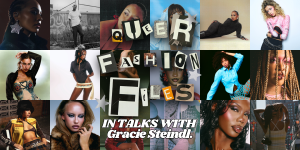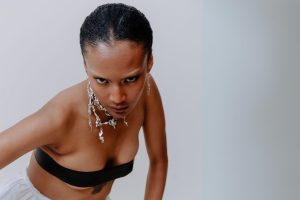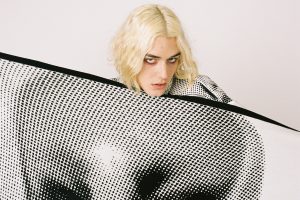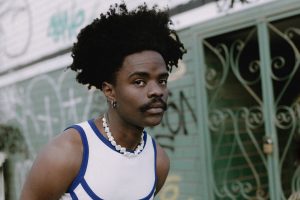Queer Fashion Files: Interview with textile artist Kate Just
By: Hailey Moroney
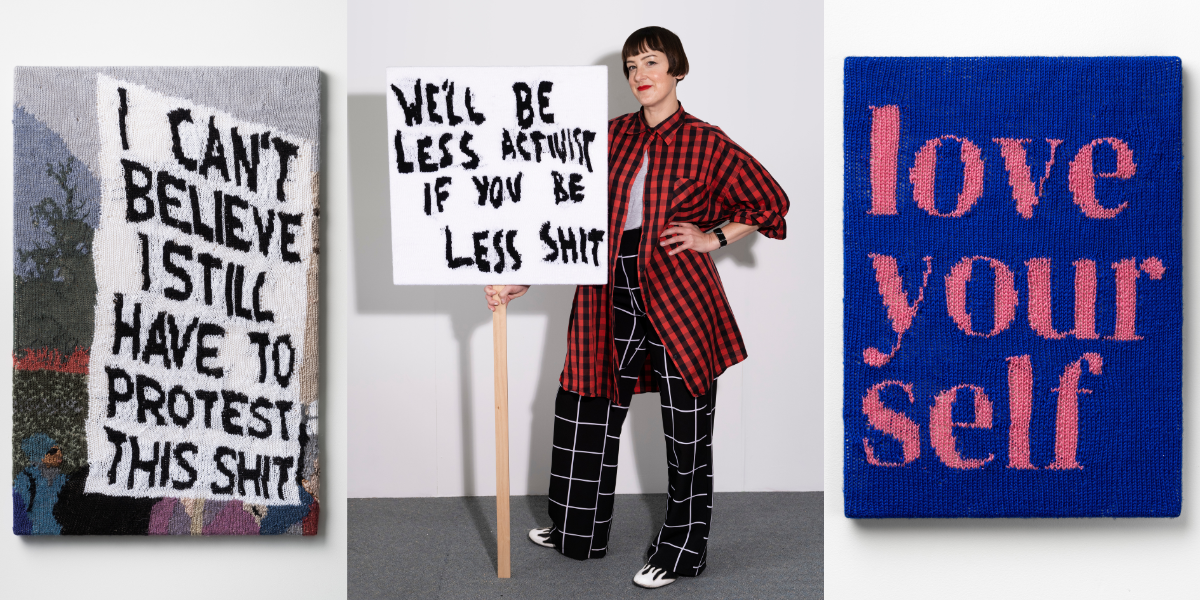
Welcome to Archer’s Queer Fashion Files! Each month, we’ll interview trendsetters and tastemakers, showcasing the diversity and talent of the fashion world. You can check out all episodes of our Queer Fashion Files here.
In Episode 15, Hailey Moroney chats to textile artist Kate Just.
Kate Just is a queer North American/Australian artist of Polish, Irish, Scottish and German descent who lives and works on Dja Dja Wurrung Country in Victoria. Just is best known for her inventive and political use of knitting.
In addition to her solo practice, Just often works socially and collaboratively within communities to create large scale, public art projects that tackle significant social issues including LGBTQIA rights, sexual harassment and violence against women. Her work creates space for viewers to closely reflect on their own relationship to art, feminism, care and social justice.
Header image: Kate Just, SELF CARE ACTION series, 2023, Hand knitted acrylic yarn, canvas, timber. Each panel is 55 x 40cm. Photo by Simon Strong.

Kate Just, Another World is Possible, 2022, Hand knitted wool and acrylic yarns, timber, canvas. 77cm x 92cm. Photo by Simon Strong. Collection: National Gallery of Australia.
Hailey Moroney: Kate! Hi! Our tiny Archer team are so obsessed with your work, so I’m really inspired and happy to be interviewing you for this series – thank you! Can you tell our readers about how you found yourself pursuing art and how it led to knitting?
Kate Just: Well, I’m obsessed with Archer, so the joy is mutual! I have always made art. When I was younger, I mainly focused on drawing and painting. I went to film school at Boston University from 1992–1996, and originally thought I would become a filmmaker. But when I did a semester abroad in Australia, I met my now-wife Paula – we’ve been together for 30 years now! – and my whole life changed course.
At the time, there were only three countries in the world where a queer person could migrate to another country to join with their defacto partner, and Australia was one of them. I migrated under an interdependency visa, a loophole category that supported same-sex migration.
After arriving in Australia, it took me almost four years before I could work or study as a permanent resident. During that time, I returned to making art, as I could do it with little money and basic materials. I then decided to go back to school at the Victorian College of the Arts (where I now teach).
After the tragic death of my brother in 2000, I returned to the USA for the funeral and found my mom on the couch, knitting. I picked up some needles and learned from her. In that moment, I was connected to the ways knitting could hold and translate a wide array of emotional experiences and narratives.
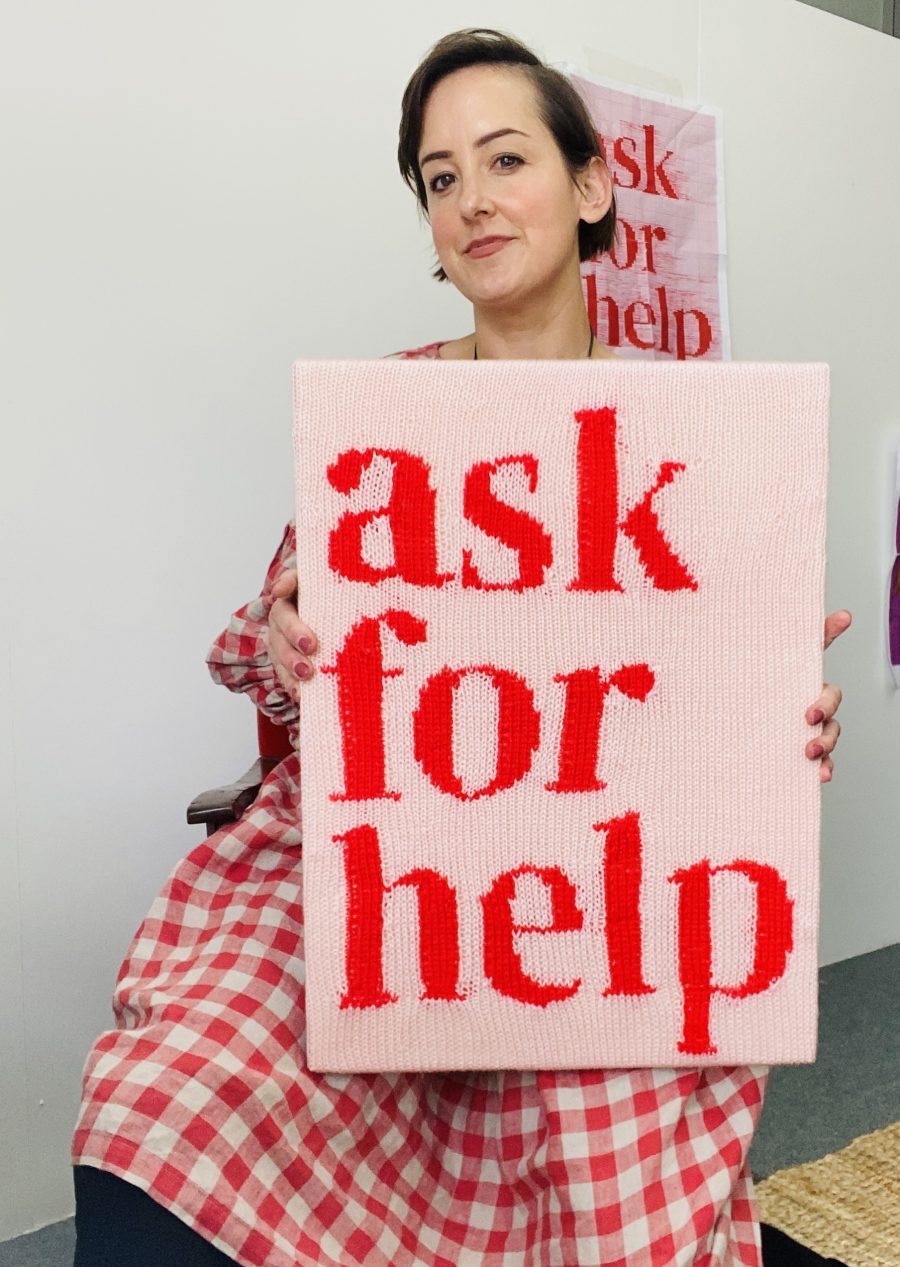
Kate Just with her work Ask for Help, 2022, hand knitted acrylic yarns, canvas, timber. 55 x 40cm. Photo by Kate Just.
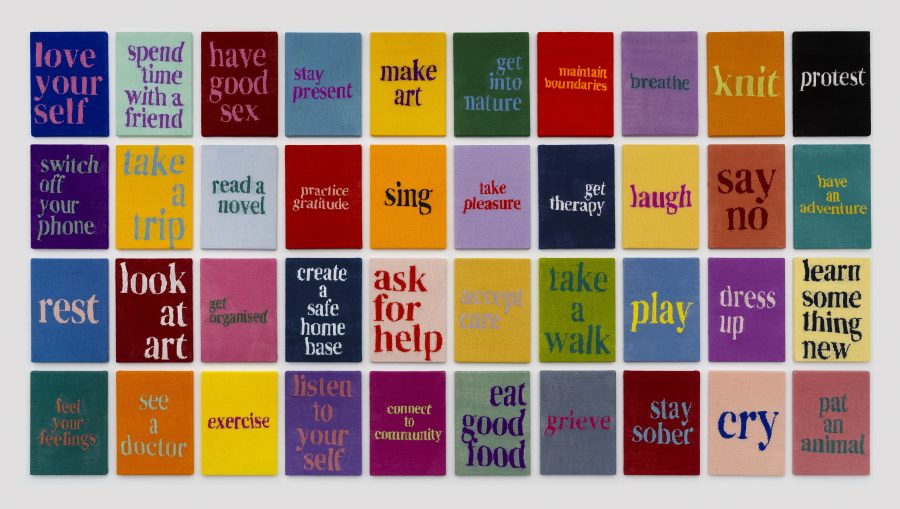
Kate Just, SELF CARE ACTION series, 2023, Hand knitted acrylic yarn, canvas, timber. Each panel is 55 x 40cm. Photo by Simon Strong.
HM: What encouraged you to follow knitting rather than painting as your main art form?
KJ: Like most artists, I didn’t need much encouragement. Once I started knitting and realised its powerful connection to histories of intergenerational knowledge, women’s work, political struggle and the body, I dropped my paintbrushes like hot potatoes!
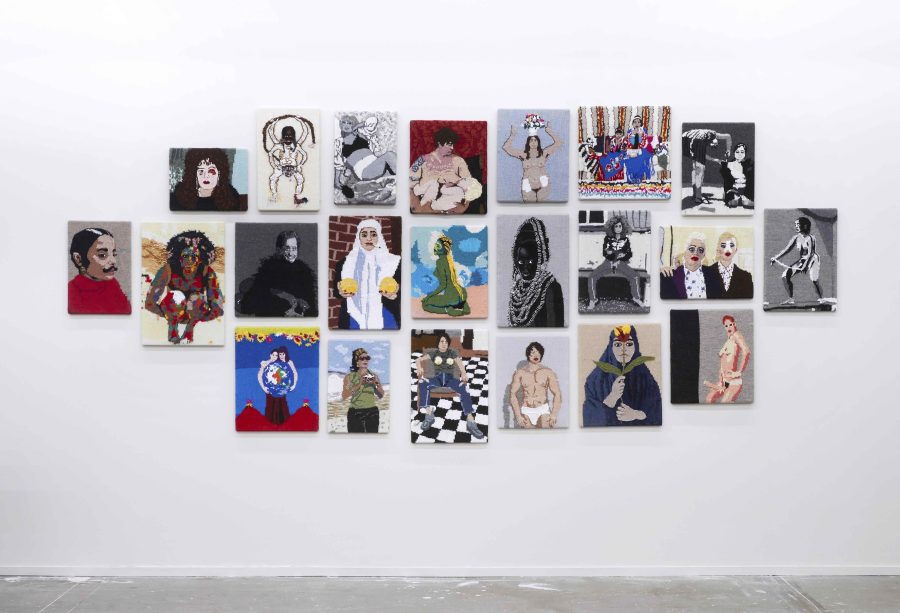
Kate Just, Feminist Fan, 2018. Hand knitted homages to artists (L to R and top to bottom): Ana Mendieta, Nan Goldin, Tracey Rose, Mithu Sen, Louise Bourgeois, Annie Sprinkle and Beth Stephens, Cindy Sherman, Sarah Maple, Tracey Moffatt, Catherine Opie, Juliana Huxtable, Sarah Lucas, Hannah Wilke, Zanele Muholi, Cassils, Wendy Redstar and her daughter Beatrice Redstar Fletcher, Valie Export, Shirin Neshat, Yoko Ono, Genesis Breyer P-Orridge and Lady Jaye, Lynda Benglis. Dimensions variable. Photo by Kate Just.

Kate Just, Love Yourself, 2023 from SELF CARE ACTION series, hand knitted acrylic yarn, canvas, timber, 55 x 40cm. Photo by Simon Strong.
HM: I can see you’ve navigated the traditional art world and have achieved great acclaim. Through this series, I aim to show young queer artists that read Archer how they can navigate the industry in endless different ways.
Do you have any words of wisdom on building a successful career, applying for grants, and gaining recognition in the art world? Can you speak to how much you take this into consideration within your artistic process?
KJ: There have been highs and lows in this art life of mine! When I first graduated from art school, I lived in the Dandenongs because I could afford a cheaper house to rent with space to make art.
When I moved back to the city and we adopted our first child out of foster care, we spent about five years living in community housing in St Kilda because our family income was low, and we wanted to balance art, family and work.
Recently, at the age of 50, we moved to a regional area an hour and a half out of Melbourne, again to try to establish more secure housing and a balance between art, life and family. No matter how much acclaim and opportunity an artist has – and I have been very lucky and had a lot! – the life of an artist is precarious and unstable.
There is rejection for everyone, and I still get rejected a lot. All of the big creative decisions are happening in your own space and your own mind. So you need to be incredibly resilient, strong and able to survive that. Some of the things I do to keep mentally strong are swimming or running every day, staying sober (I gave up drinking four years ago), having a small number of close real friends, getting therapy when I need it, and staying close to and connected to nature (I have almost always lived near the bay, bushland, reservoirs, or mountains).
As hard as being an artist is, there is also nothing I would rather do. There is so much joy in making things with your own two hands that reflect your life and ideas. I love meeting other artists and teaching art, and I have been able to travel the world.
I turned 50 years old this year, and did a big solo show at Hugo Michell Gallery called 50 Rules for Making Art. The show included knitted texts and a book that looks back on my 50 years of making art, which shares ideas with other artists on how to survive and thrive in this industry. Some of the tips include: get used to rejection, don’t compare yourself to others, let go of expectation, do the work, and make art for yourself. I encourage people to read the book!

Kate Just, 50 Rules for Making Art book in front of the exhibition by the same name at Hugo Michell Gallery. Photo by Jenna Pippett and Gabi Lane.
HM: Have you found that your art has always been inherently political – or has that developed and grown with you as the human behind the art?
KJ: My art has always had personal and political intent, but it grows and takes shape in new ways all the time.
I share my politics and hope for a better world – from my giant knitted hedge LOVE to my work Feminist Fan, a series of handknitted portraits of my favourite queer and feminist artists from around the world. As further examples, my Anonymous was a woman project explores the erasure of women from the canon of art, and my PROTEST SIGNS series replicates real-world protest signs as knitted pieces.
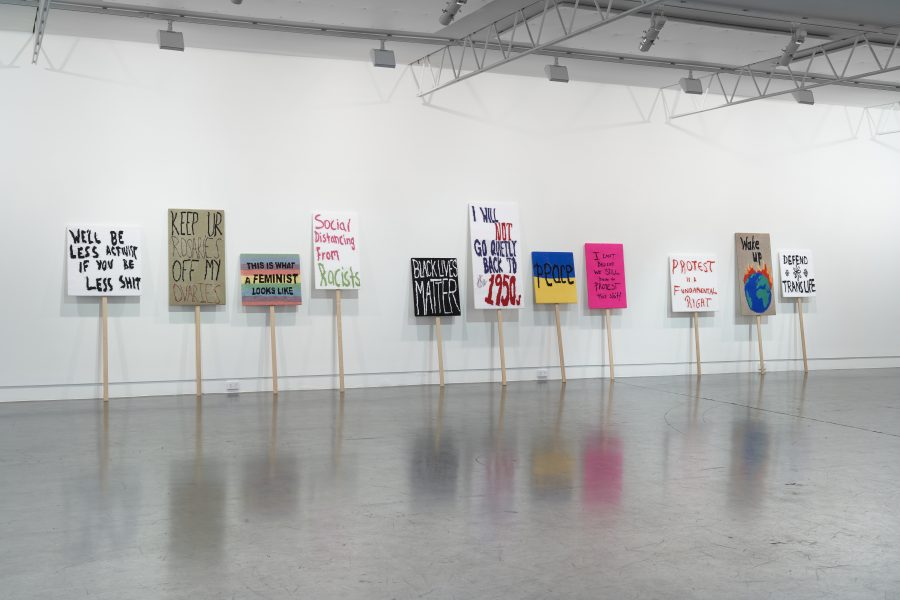
Kate Just, PROTEST SIGNS, 2022, at Hugo Michell Gallery, Adelaide. Hand knitted wool and acrylic yarns, plywood, oak. Dimensions variable. Photo by Sam Roberts.
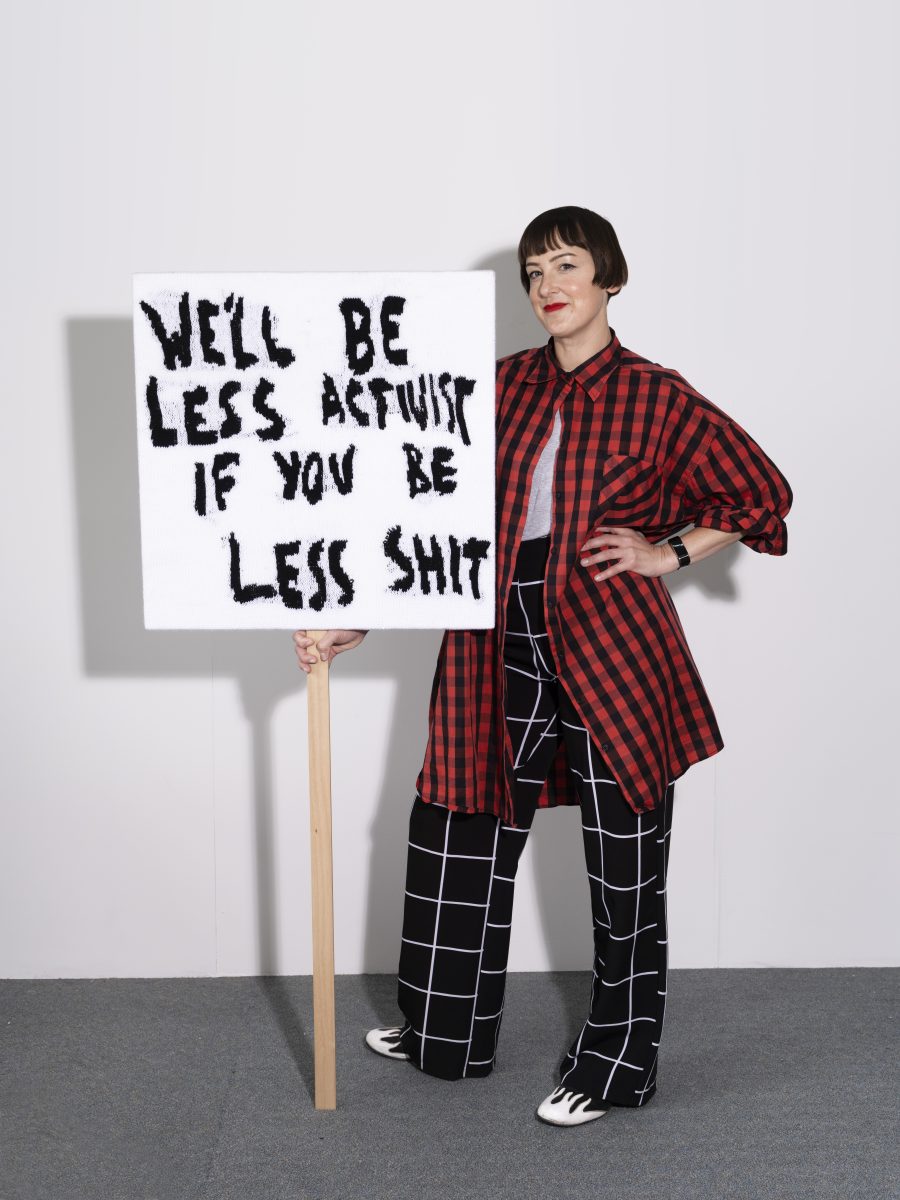
Kate Just pictured in her studio holding her work We’ll Be Less Activist if You Be Less Shit, 2022, from the series PROTEST SIGNS. Photo by Simon Strong.
HM: How does your personal identity inform your work, choices, and collaborations?
KJ: My personal identity as a queer woman, a teacher, a feminist, and a parent is so interwoven into the fabric of who I am (textile pun!) that I can’t separate it from my artwork. I am definitely careful about with whom I work, and the ways in which my work is represented in public context.
When I have worked with bad galleries, or witnessed unprofessional behaviour or institutional problems in the art world or at work, I have been vocal about the changes needed.
Over my career, I have increasingly looked at ways of bringing other knitters and crafters into some of my projects, through knitting circles and community engaged banners or hanging pieces. My work and my life are very much driven by imagining a better world with my two hands, and in conversation and collaboration with others.
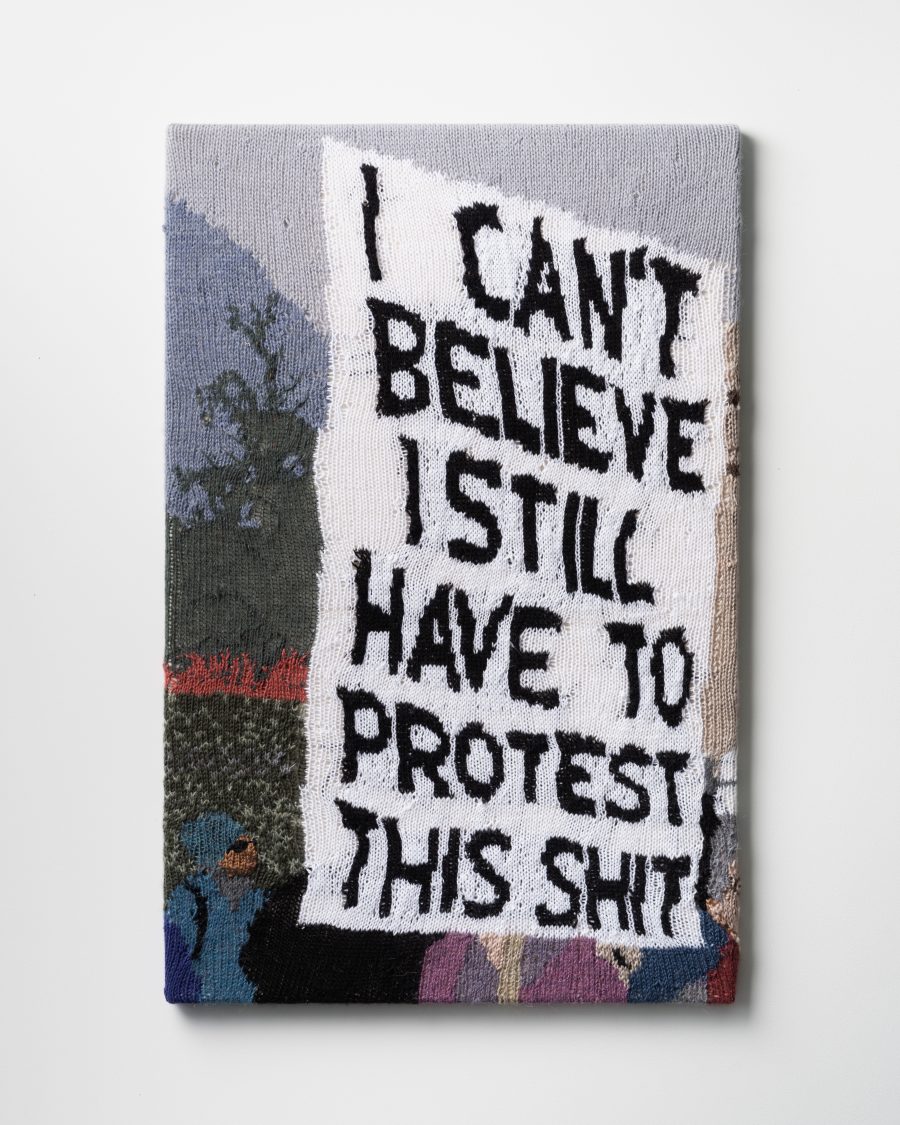
Kate Just, I Can’t Believe I Still Have to Protest This Shit, Hand knitted wool and acrylic yarns. 86 x 56cm. Gift of Shane Le Plastrier to Art Gallery South Australia, Adelaide. Photo by Simon Strong.
HM: I usually like to end my interviews by asking: what’s next?! What can our readers eagerly anticipate in the world of Kate Just?
KJ: Currently, my work SELF CARE ACTION is exhibited as part of Contextile Biennial of Textile Art in Guimarães, Portugal. My community-engaged giant yellow banner CONVERSATION PIECE is also touring Australia as part of the Tamworth Textile Triennial.
On 22 November 2024, an incredible exhibition called Radical Textiles, which will feature some of my handknitted protest signs, opens at the Art Gallery of South Australia. I’ll travel there for the opening festivities and artist talks.
My knitted self-portrait is on display in the Lester Portrait Prize at the Western Australian Museum in Perth, and I am a finalist in the upcoming Fisher’s Ghost Art Award in Campbelltown, NSW.
I head off on two residencies at the end of year: one to Bundanon in Illaroo, NSW, and then to the Mornington Artist-in-Residence site in Portsea, VIC, where I will be developing some new textile quilted works.
This will be followed by some well-earned summer rest with my family and toy poodle Pearl, before I head into another hectic year of teaching and artmaking in 2025!

Kate Just, detail of 50 Rules for Making Art, 2024 at Hugo Michell Gallery. Hand knitted acrylic yarn, canvas, timber. Dimensions variable. Photo by Sam Roberts.
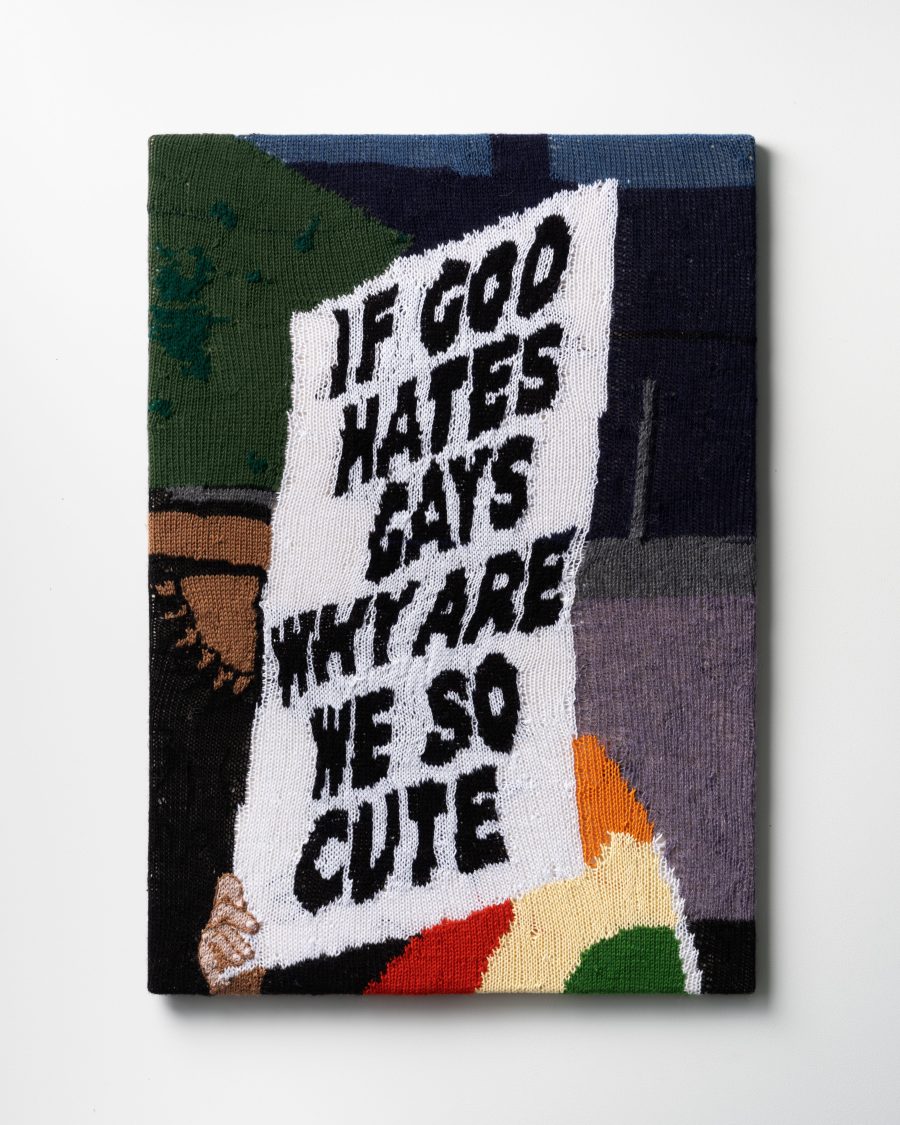
Kate Just, If God Hates Gays Why Are We So Cute?, 2022, Hand knitted wool and acrylic yarns, canvas, timber, 86.5 x 61cm. Photo by Simon Strong.
You can stay up to date with Kate Just on Instagram.
If you want to pitch an idea for Archer’s Queer Fashion Files, email pitch@archermagazine.com.au with ‘QUEER FASHION FILES’ in the subject line. You can check out the rest of our Queer Fashion Files here.



